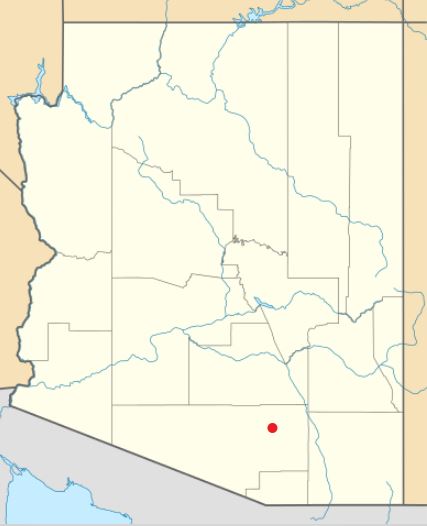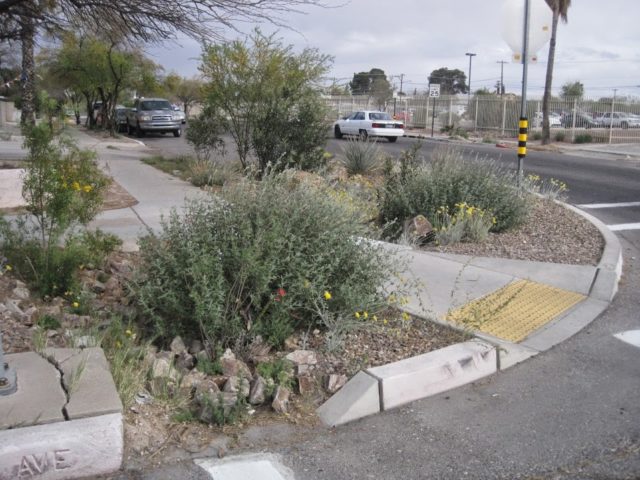Active Policy Guidelines (APGs) are internal Tucson Department of Transportation (TDOT) policies that include design and construction standards for all transportation projects. Consultants are given relevant APGs when starting any new transportation project. The Green Streets APG, adopted by the Tucson Mayor and city council in May 2013, requires the incorporation of green infrastructure features into Tucson roadways wherever possible.

Green infrastructure captures stormwater runoff from roadways through landscaped medians and parkway basins. The APGs require that features be designed to capture at least the first 0.5 inch of rain that falls on the roadway and that a variety of native grasses, shrubs, and trees be planted in order to provide shade, habitat, and beautification benefits.
Taking utility placement and constraints into consideration, these features will be incorporated into early design concepts and evaluated for their cost-benefit potential for implementation.

The proposed green streets policy for the City of Tucson would require TDOT to integrate stormwater harvesting features (like vegetated street-side basins) into all new, publicly funded roadway development and re-development. Such features would be included from the beginning of the design process in order to ensure their effectiveness.
A significant benefit of the green streets policy is the reduced demand for precious potable water supplies for landscape irrigation. Stormwater harvesting basins and appropriate plant selection ensure that once established, plants will no longer need supplemental irrigation. This reduces the environmental cost to the watershed as well as the economic cost to the City of Tucson in the long-term.
Tucson’s current urban forest canopy cover is estimated at between 2-10 percent, far below those recommended for healthy urban areas by groups like American Forests.
The APGs would require designs where street trees provide shade to streets and sidewalks. The benefits of the initiative include:
- a more comfortable and attractive environment for bicyclists and pedestrians.
- increased real estate values.
- decreased potable water use.
- reduction of the urban heat island effect.
Downloaded from ResilientWest.org
a project of
Resilient Communities and Watersheds
- Challenges:
- flooding
- waterconservation
- urbanheat
- publichealth
- urbanform
- State:
- arizona
- Scale:
- site, community, neighborhood
- Type:
- urban

